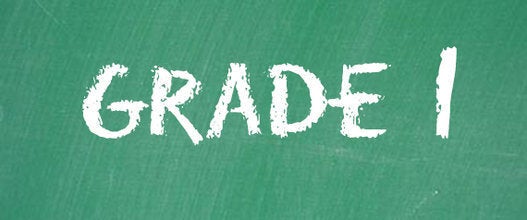
Yesterday I spent the day going over the newly released 2015 Ontario Health and Physical Education Curriculum (Elementary) with a fine-toothed comb to generate a comprehensive précis made up of every single quote that had anything to do with the "sex ed" parts.
Unfortunately, misconceptions and misinformation about this curriculum are continuing to make their way around the Internet, mostly because people seem bound and determined to willfully ignore the actual facts before forming an opinion.
So today I'm going to address the most common myths about the new curriculum.
Myth #1
Explicit sexual content, including oral and anal sex, consent, and rape will be taught to children as young as six.
Key words/phrases:
"graphic content," "young ages," "desensitizing," "innocent minds," "putting thoughts into young minds," "too young to learn about sex," "age-inappropriate content," "explicit content," "children will be taught to consent to sex," "protect our children's innocence."
Truth:
In grade one, children will be taught to identify body parts, including genitalia, using their correct terms (penis, testicles, vagina, vulva) and to recognize exploitative behaviours such as inappropriate touching. In grade two, the concept of "consent" will be introduced very broadly as the right to say "no" in threatening situations. This has been misrepresented by many critics as "teaching children the concept of consent," which is then in turn further misrepresented as "teaching children to consent to sex."
The concept of human and animal reproduction -- presented broadly as the union of the egg and sperm -- has actually been pushed back a grade, moving from grade three to grade four, and the first discussion of sexual intercourse occurs in grade five, the same as in the previous curriculum.
Masturbation is defined in grade six and characterized as normal and not harmful, but students are not "taught masturbation." A 1950s-era sex-ed video that I found in my research describes masturbation more graphically than the 2015 curriculum. Oral-genital contact and anal intercourse are discussed in grade seven. They are listed as potential sexual activities that one should consider abstaining from or delaying -- not described graphically, "taught" or offered up as alternatives to delaying vaginal intercourse. They are described as part of a comprehensive sex education curriculum, which is the only type of sex education curriculum that is proven to reduce teen pregnancy and STI infection rates and raise the age of onset of first sexual activity.
Myth #2
Children will be taught graphic information about homosexuality and gender fluidity and forced to view them as normal, accepted practice.
Key words/phrases:
"gay premier of Ontario," "homosexuality," "homosexual activities," "sick," "homosexual agenda," "Kathleen Wynne, a practicing lesbian," "family values," "personal beliefs," "neo-liberal beliefs," "lifestyle choices," "impressionable children," "gay sex acts," "gender fluidity," "gender expression," "gender is determined by your sex organs," "gender identity," "choose to change gender."
Truth:
In the 2015 curriculum, children will be taught to respect people's differences. Starting in grade three, they will be introduced to the concepts of gender identity and sexual orientation as invisible characteristics; other examples include learning abilities, allergies, and cultural values. The teacher prompt for this topic includes "Give me some examples or things that make each person unique," to which an example student response is "We all come from different families. Some students live with two parents. Some live with one parent. Some have two mothers or two fathers. Some live with grandparents or with caregivers. We may come from different cultures. We also have different talents and abilities and different things that we find difficult to do."
Yes, the fact that we must treat everyone with respect regardless of their personal characteristics is emphasized throughout the curriculum. Yes, the concept of same-sex relationships and gender identity are introduced in grade three and treated as normal. That's because, under the laws of this country in which we live, we must treat everyone with respect regardless of their personal characteristics, and same-sex relationships are normal and gender expression is protected by law (here and here). It really doesn't get any more cut and dry than that.
Entrenching the pretense that LGBTQ people simply don't exist in our public school system is discriminatory. Saying that it's not the statistical norm to be in a same-sex relationship and therefore we don't have to talk about it a curriculum that covers human relationships would be akin to saying, "Well, 80 per cent of our school's population identifies as Canadian, so what's the point in learning world geography? Consider the risk that students will be influenced by it and want to become Japanese."
If your personal values do not line up with the laws of Canada, it is your right to impart those beliefs to your children at home, but your children will be required to be versed in and abide by those laws while in the public school system.
Myth #3
This curriculum was designed by a pedophile.
Key words/phrases:
"Ben Levin," "Benjamin Levin," "child pornographer," "should want to distance themselves," "alleged child molester."
Truth:
It is very unfortunate that a man charged with multiple counts relating to child pornography had a hand in developing the failed 2010 curriculum. This does not change the fact that the current curriculum is outdated by almost two decades and in dire need of updating. It probably would have been the easier choice for the government to leave the curriculum issue alone for a few more years to let people forget about Ben Levin before quietly reintroducing it (or not bothering at all), but they chose to persevere with the new curriculum.
Many other people, including education, child development, and policy experts, as well as 4,000 heads of school parent councils across Ontario, were involved in developing the 2015 curriculum, Levin NOT included. The proposed changes are research-supported and intended to make children less vulnerable to exploitation, including over the Internet.
Pedophiles, child pornographers, and child molesters, in fact, are the ones who would benefit MOST from the older curriculum remaining in place.
Myth #4
Parents are being forced to accept a curriculum they had no say in.
Key words/phrases:
"force-fed," "police state," "not comfortable," "opt out," "not in agreement," "forced upon us," "right to our beliefs," "freedom of speech," "should have a democratic poll," "majority disagree," "catering to the minority."
Truth:
Parents can choose to remove their children from all or part of the Physical and Health Education curriculum. Children whose parents make this choice are usually kept home or supervised in the library or another part of the school while the class takes place. In fact, the public education system is not mandatory. While the United Nation Convention on the Rights of a Child recognizes a child's right to an education, the Ontario Education Act states that a child is excused from attendance at school if they are receiving satisfactory instruction at home or elsewhere. This means that you are free to withdraw your child from the public school system provided you are committed to educating them at home or within the private school system.
As to the second point, having no say, a) this curriculum is being implemented by the Ontario Ministry of Education, a Ministry of the democratically elected Government of Ontario; and b) the process of creating this curriculum included consultation with 4,000 chairs of parent councils (i.e. parents who were democratically elected to chair parent councils in each of 4,000 schools across Ontario).
Myth #5
It's up to parents to teach their children these concepts, not the schools.
Key words/phrases:
"why aren't they teaching math," "what happened to the 3 Rs," "when did this become the school's responsibility," "underfunded and understaffed school," "these kids can't read or write but they know about sex," "this is the parent's job," "my child should learn about this from me."
Truth:
Sexual education has been taught in schools FOREVER. Seriously -- here's a direct quote from this 1950s sex-ed film: "You can cause an ejaculation by yourself too, by masturbating -- rubbing the penis. Sometimes you hear that masturbation affects your mind or your manhood. It isn't true. For kids your age, it's just something normal." We're talking Wally and the Beave here. This is nothing new. Depending on how old you are, it might have been putting condoms on bananas, or a filmstrip in a dark classroom. Maybe the boys and girls were split up, maybe they stayed together? But you learned it.
Very little has actually changed from the previous curriculum in terms of what is actually being taught. There have been major, necessary updates in keeping with law and technology -- changes to marriage equality, social media and digital safety. The main difference between this and the 1998 curriculum is that the 2015 curriculum includes much more detail. Where the 1998 curriculum provided broad topics and left it to the discretion of the individual teacher to interpret them, the 2015 curriculum actually makes it EASIER for parents to see and understand exactly what their children will be learning in school. By providing the detailed concepts and teaching prompts, the curriculum makes it clear what information teachers are expected to provide and makes the curriculum less susceptible to the teacher's intentional or unintentional biases.
The curriculum (both 2015 and 1998) also indicates that students should seek guidance from trusted adults in their lives, such as parents, doctors, elders, or religious leaders, when considering sexual choices, supporting the rights of parents to influence their children's values and beliefs when it comes to making decisions. Just as ever before, the 2015 curriculum provides the basic facts, at developmentally appropriate ages, leaving moral judgments at home.
I don't really know how many more ways I can say it. Educate yourself. Get the facts. Don't be influenced by hyperbole.
And then support the 2015 Ontario Health and Physical Education Curriculum.
ALSO ON HUFFPOST
